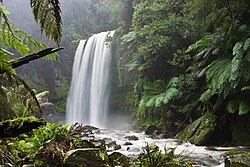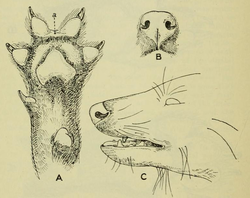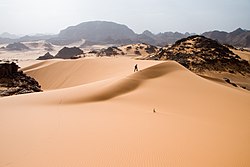Conservation biology

Conservation biology is the study of the nature and status of Earth's biodiversity, aimed to protect species, their habitats, and ecosystems from threatening to extinction.[1][2] It combines subjects ranged from sciences to economics and the practice of natural resource management. The name conservation biology was introduced as the title of a meeting held at the University of California in 1978. Both conservation biology and the concept of biodiversity influence conservation policy.[3][4][5][6]
Conservation Biology Media
White gyrfalcons drawn by John James Audubon
More conservation research is needed for understanding ecology and behaviour of the dhole in central China.
Some biodiversity loss is more insidious than others due to systemic neglect. For example, sport killing and wanton waste of tons of native fishes from unregulated 21st century bowfishing in the United States. New conservation movements are needed to deter irreparable biodiversity loss to fragile freshwater ecosystems.
A pie chart image showing the relative biomass representation in a rain forest through a summary of children's perceptions from drawings and artwork (left), through a scientific estimate of actual biomass (middle), and by a measure of biodiversity (right). The biomass of social insects (middle) far outweighs the number of species (right).
Summary of 2006 IUCN Red List categories:*EX (Extinct) — EW (Extinct in the Wild) — CR (Critically Endangered) — EN (Endangered) — VU (Vulnerable) — NT (Near Threatened) — LC (Least Concern)
Tadrart Acacus desert in western Libya, part of the Sahara
An art scape image showing the relative importance of animals in a rain forest through a summary of (a) child's perception compared with (b) a scientific estimate of the importance. The size of the animal represents its importance. The child's mental image places importance on big cats, birds, butterflies, and then reptiles versus the actual dominance of social insects (such as ants).
References
- ↑ Wilcox, Bruce A.; Soulé, Michael E.; Soulé, Michael E. (1980). Conservation biology: an evolutionary-ecoloogical perspective. Sunderland, Mass: Sinauer Associates. ISBN 0-87893-800-1.
{{cite book}}: CS1 maint: multiple names: authors list (link) - ↑ Soule ME; Soule, Michael E. (1986). "What is Conservation Biology?" (PDF). BioScience. American Institute of Biological Sciences. 35 (11): 727–34. doi:10.2307/1310054. JSTOR 1310054. Archived from the original (PDF) on 2019-04-12. Retrieved 2010-10-26.
- ↑ Soule, Michael E. (1986). Conservation Biology: The Science of Scarcity and Diversity (hardcover ed.). Sinauer Associates. p. 584. ISBN 0878937951.
- ↑ Hunter, Malcolm L. (1996). Fundamentals of conservation biology. Oxford: Blackwell Science. ISBN 0-86542-371-7.
- ↑ Meffe, Gary K.; Martha J. Groom (2006). Principles of conservation biology (3rd ed.). Sunderland, Mass: Sinauer Associates. ISBN 0-87893-518-5.
{{cite book}}: CS1 maint: multiple names: authors list (link) - ↑ van Dyke, Fred (2008). Conservation Biology: Foundations, Concepts, Applications (2nd hardcover ed.). Springer Verlag. pp. 478. ISBN 978-1-4020-6890-4.






